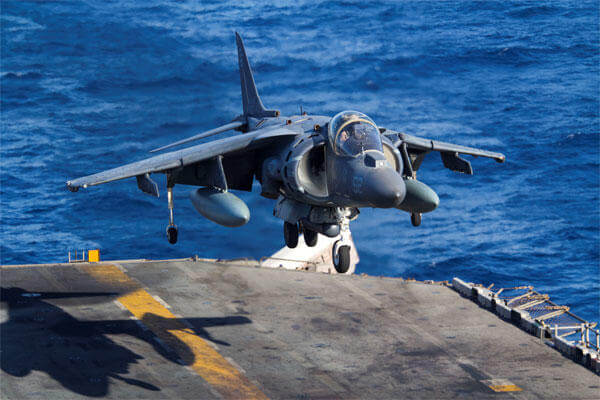The commander of III Marine Expeditionary Force has lifted an operational pause order grounding all AV-8B Harriers in Japan following a Sept. 22 crash off the coast of Okinawa.
Lt. Gen. Lawrence Nicholson said the pilot of the crashed aircraft, who ejected safely, had been medically cleared and returned to his unit.
All of the Harriers in Japan, including the other aircraft attached to Marine Attack Squadron 542, the unit that sustained the crash, have been thoroughly inspected, Nicholson said in a statement. Marine officials have also completed an initial review of the mishap.
"Preliminary reports from ongoing investigations do not identify the incident's cause as systemic in the aircraft, aircrew or maintenance," Nicholson said, though he did not say if the actual cause of the crash had been determined. "Additionally, since the mishap, Marine Corps Harrier aircraft have continued to operate safely around the world, demonstrating the platform's reliability."
The crash remains under investigation, he said.
"While we cannot discuss the details of ongoing investigations, we are confident and in concurrence with our senior leadership in Hawaii and Washington, that we are able to safely return to normal flight operations," he said in the statement.
The Cherry Point, North Carolina-based VMA-542 is currently stationed aboard Kadena Air Base in Japan and attached to the Pacific-based 31st Marine Expeditionary Unit.
Nicholson said the review of the squadron included evaluations of the unit's command culture, aircrew, maintenance and aircraft material readiness.
The unit will resume air operations Friday, he said.
"The safety of our community is a priority, and we will continue to conduct preflight inspections, pilot inspections, and post-flight inspections every time we fly," he said.
The operational pause was announced Sept. 23 after the crash, the third major Harrier mishap for the Marine Corps in a year and the second aircraft loss for VMA-542.
The Harrier entered service in 1985 and is set to be replaced by the F-35B Joint Strike Fighter over the next decade. The aging platform has been the subject of scrutiny in recent years, and underwent a readiness review in 2014 and 2015 that identified key parts that were especially vulnerable to stress.
A Marine spokeswoman, Capt. Sarah Burns, said readiness for the squadron had increased since the launch of the review in 2014, with 26 percent more pilot hours completed per month and 23 percent more ready basic aircraft available.
But Marine Corps officials maintain they have not found a connection between aircraft readiness challenges and limited flight hours and recent major aircraft mishaps.
"We're working really hard on aviation, because we've dug ourselves a deep hole," Commandant Gen. Robert Neller said in a recent interview with MIlitary.com. "We're digging ourselves out. It's not going to happen overnight. It's going to happen if we get consistent, stable funding of parts and sustainment, and we get new airplanes."
-- Hope Hodge Seck can be reached at hope.seck@military.com. Follow her on Twitter at@HopeSeck.




























